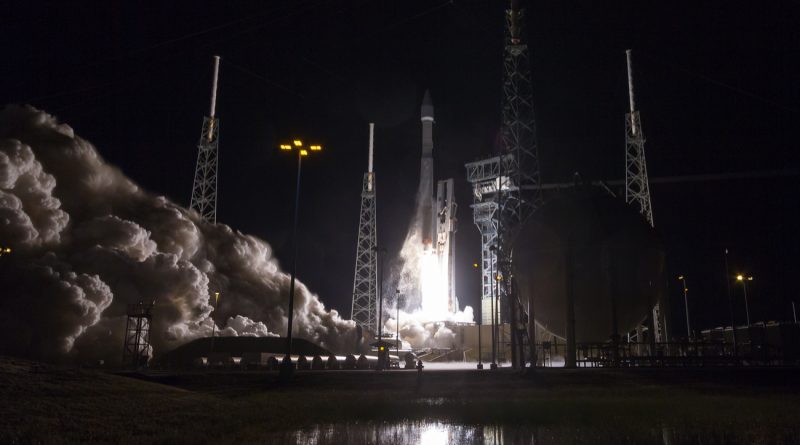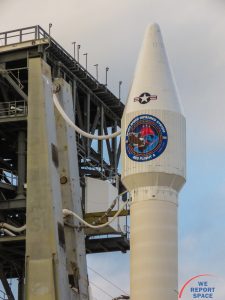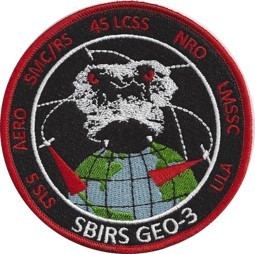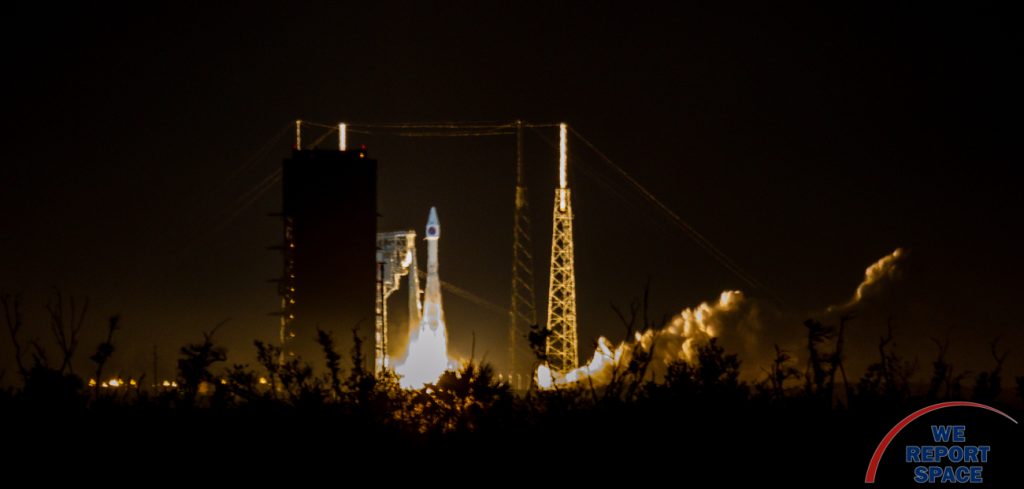What Do SBIRS-GEO-3, Gemini VII and Bumper 7 All Have in Common?


CAPE CANAVERAL: An Atlas V rocket, flying in the 411 configuration lifted off from Cape Canaveral Air Force Station on Friday, January 19, 2018. The logo on the fairing clearly said SBIRS-GEO-4, but the satellite inside the fairing was the third Space-Based Infrared System Geosynchronous Earth Orbit (SBIRS-GEO-3) satellite off the production line. This isn't the first time that a mission launched out of sequence. Gemini-7 launched before Gemini-6. Bumper-8 launched before Bumper-7. And now, the 4th SBIRS-GEO launched one year before the third SBIRS-GEO.
Bumper was a combination of the German V-2 rocket and the WAC Corporal sounding rocket and was used to study problems pertaining to two-stage high-speed rockets. Eight rockets were launched during the Bumper program between May 13, 1948, to July 29, 1950. The first six Bumpers launched at White Sands. Bumper 8 was the first rocket to launch from Cape Canaveral. Bumper 8 launched July 24, 1950. Bumper 7 launched five days later on July 29, 1950.
When the original Gemini VI mission was scrubbed because the launch of its Agena docking target failed, Gemini VII was used as the rendezvous target instead. Primary objective was to determine whether humans could live in space for 14 days. Gemini VII launched on December 4, 1965. Gemini VI (officially Gemini VI-A) launched 11 days later on December 15, 1965.
The anomaly appeared when the Sands History Center received a shipment of SBIRS-GEO-3 patches from the Space Launch Squadron (SLS) after the January 2018 launch. This seemed to be a shipping error. But as the museum asked for replacement patches, the SLS explained that the SBIRS-GEO-4 satellite launched on January 20, 2017.

Confused? Here is an explanation from Chip Eschenfelder, Communications Lead, Lockheed Martin Space: "I think the confusion over GEO-3/GEO-4 stems from the order the satellites came off the production line. Lockheed Martin delivered the third GEO space vehicle to Air Force Space Command earlier than required, based on the current health of the missile-warning constellation. The government found it to be more cost-effective to continue to store that GEO space vehicle and have the fourth GEO satellite off the production line launch first -- in January 2017. So the fourth SBIRS GEO satellite from the production launched as SBIRS GEO Flight-3 in January 2017 and the third satellite from the production line launched as SBIRS GEO Flight-4 in January 2018. Some folks continue to call the satellites by their production line order, but SMC/Air Force Space Command official is calling the January 2018 launch SBIRS GEO Flight-4."
Patch collectors will want to pay careful attention to the patches issued by the 5th Space Launch Squadron. The patch labeled SBIRS-GEO-3 is for the 2018 launch. The patch labeled SBIRS-GEO-IV launched in 2017.
SBIRS GEO Flight-4 is the latest satellite to join the Air Force's orbiting missile warning constellation equipped with powerful scanning and staring infrared surveillance sensors. The sensors collect data for use by the U.S. military to detect missile launches, support ballistic missile defense, expand technical intelligence gathering and bolster situational awareness on the battlefield. The satellite also completes the initial constellation and allows SBIRS to provide global coverage.

Lockheed Martin manufactured the SBIRS GEO Flight-4 satellite at its Sunnyvale, California, facility. The satellite was delivered to Florida on Oct. 31, 2017.
Headquartered in Bethesda, Maryland, Lockheed Martin is a global security and aerospace company that employs approximately 97,000 people worldwide and is principally engaged in the research, design, development, manufacture, integration and sustainment of advanced technology systems, products and services.

Stunning, full color photo book covering every east coast launch spanning 2014-2015, including the first-ever powered landing of a SpaceX Falcon 9 rocket.
More Info



